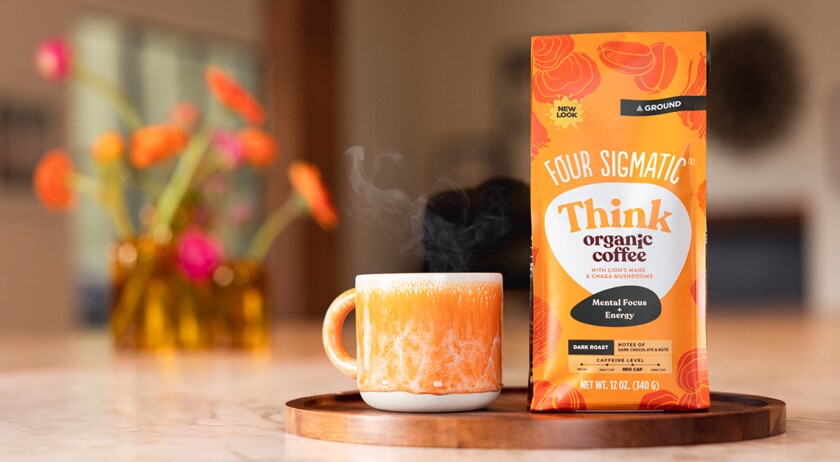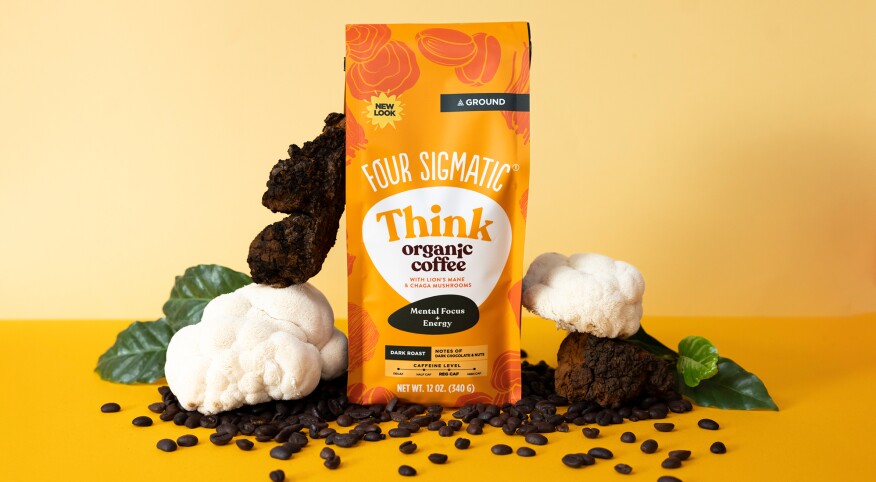If the idea of having a mushroom coffee sounds absolutely disgusting, I can totally relate. After all, I nearly gagged the first time I heard about this latest craze. In fact, I refused to try it for months, even though I was nearly shunned from my community of health writers for being so judgy. It was only when I grabbed a sample of coffee without reading the fine print describing it as “mushroom coffee” that I finally understood the hype. The mushroom coffee tastes nothing like mushrooms. The brand I tried initially, Renude, tasted more like a Starbucks Frappuccino without the calories and sugar. And it’s allegedly good for you? Sign. Me. Up.
Here’s why its purported to be good for you, how it tastes nothing like coffee, and how to tell one brand from the next.
What does mushroom coffee look like? There’s no need to be afraid of mushroom coffee (even my mushroom-hating 12-year-old took an unknowing sip and didn’t flinch). Brewed, it tends to look like regular coffee. Dried, it’s usually sold as ground coffee with the mushrooms already blended in. If you didn’t know better, you’d never know from the looks of it that there are actual mushrooms within the ground coffee.

What are the health benefits of mushroom coffee? It depends on who you ask. Adding mushrooms to your diet, including to coffee, should be of benefit, because mushrooms can be a good source of vitamins and minerals. But as the Cleveland Clinic puts it, the mushroom coffee hype may be just that — hype: Research hasn’t shown that adding mushroom powder to your coffee has the same effect as actually eating mushrooms. Are powdered, processed, brewed mushrooms really a superfood? It remains to be seen. Still, mushroom coffee, made with medicinal mushrooms, such as chaga, lion’s mane and reishi, decidedly isn’t unhealthy. Chaga mushrooms are rich in antioxidants, which help boost your immune system; reishi mushrooms can reduce inflammation and, as shown in studies on mice and rats, improve sleep quality; and studies on mice and in the lab suggest that lion’s mane can protect against dementia. And ultimately, mushroom coffee might help those coffee fans who overdo the caffeine: Compared with coffee beans, which produce a cup with 80 to 100 milligrams of caffeine, mushroom coffee contains 30 to 40 milligrams of caffeine per cup, since the mushrooms replace some of the coffee beans.

Are there any downsides to drinking mushroom coffee? While it’s generally considered to be safe for most people, it’s important to be aware of potential allergies or interactions with medications (so ask your doctor before you indulge). Plus, some mushroom coffee products may contain added sugars or other ingredients that may not be as healthy. If you are prone to kidney stones, you should also avoid drinking mushroom coffee that include chaga mushrooms, as these are high in oxalates, which can lead to kidney stones. Mushroom coffee also may cause issues for those who suffer from irritable bowel syndrome and other gut problems. Finally, mushroom coffee is relatively expensive. Expect to pay at least double the price you’re paying for a cup of coffee, even if you’re making it at home. If you are truly doing this for health benefits, the Cleveland Clinic recommends eating a few mushrooms daily rather than drinking expensive mushroom coffee.
Can you make mushroom coffee yourself? Yes, says Mary Wirtz, a registered dietitian, board-certified sports dietitian and consultant for Mom Loves Best, a parenting blog. Dehydrate mushrooms, grind them into a fine powder and mix them into your coffee beans, she says. “This is typically done in a one-to-one ratio and can be combined into coffee beverages such as lattes and mochas,” Wirtz says. She reiterates that research on humans is lacking when it comes to measuring the health benefits, including safe dosages of mushroom coffee and potential interactions with medications, whether you’re making it yourself or buying it.
What ingredients should you avoid when choosing a mushroom coffee brand? Ideally, there should be no additional additives, dyes, flavorings or unnecessary ingredients in the mushroom coffee blend other than mushrooms, Wirtz says.
How is it possible that mushroom coffee doesn’t actually taste like mushrooms? The mushrooms are dried, processed and made into a flavorless powder when combined with the coffee beans. Plus, the coffee bean taste is so overwhelming that it masks any mushroom residue taste.

How do you drink mushroom coffee? Most of the blends come with the coffee already in it. If this is the case, simply add hot water, any milk or creamer and any sweetener (but try it first, as these occasionally are sweet enough on their own from natural sweeteners such as monk fruit). If it doesn’t come with the coffee, you can just add the blend to your daily brew. You can also add this to a smoothie if desired.
How should you choose a mushroom coffee brand? Look at the ingredients first. Ideally, the ingredients should be organic and chemical-free, and should include coffee beans, mushroom powder, spices such as cinnamon and nutmeg and few (if any) other ingredients.
Some mushroom coffee brands that adhere to these principles include Renude ($45 for 30 servings at drinkrenude.com) and MUD\WTR ($60 for 30 servings of the morning ritual starter kit at mudwtr.com).
Do you love mushrooms? Would you try mushroom coffee? Let us know in the comments below.










